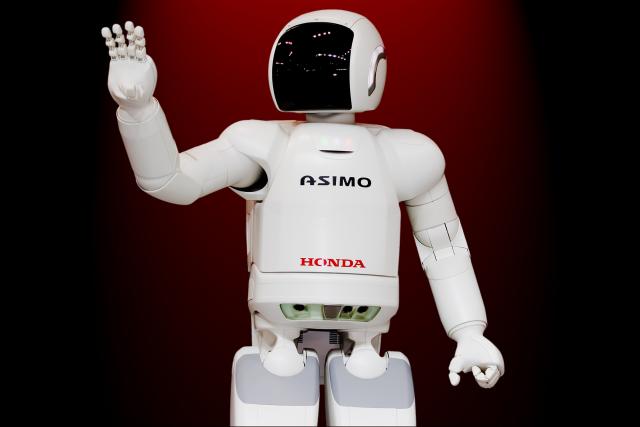From Rosie to Roomba, autonomous robots bring sci-fi to life
January 23, 2019Have you ever considered the great number of science fiction stories that foretold science and technology developments that eventually happened?
In 1869, Jules Verne wrote Twenty Thousand Leagues Under the Sea, which anticipated (thirty years early) the use of submarines. By 1930, thanks to the invention of the airplane, it became possible to travel across the globe within a short time span – faster, even, than the journey described in Verne’s Around the World in Eighty Days, published in 1873.
Humans landed on the moon in 1969; however, H.G. Wells had already predicted this event in his 1901 book, The First Men in the Moon.
And the trend hasn’t stopped. Today, as more and more of us depend on autonomous robots to accomplish a variety of tasks, the predictions of writers such as Isaac Asimov are coming true.
One of the most prolific masters of science fiction, Asimov was fascinated by robots. His Robot Series comprised 38 short stories and five novels written between 1939 and 1985.
Asimov wasn’t alone: robots not only became a staple of the sci-fi genre but found their way into the wider popular culture. In 1962, for example, The Jetsons introduced Rosie the Robot, a dependable housekeeper. She cleaned, helped with daily chores, prepared meals, and was always conscientious and considerate.
The series aired in the 1960s and again in the 1980s. Generations of Jetsons viewers were exposed to the concept of an autonomous robot interacting with humans and displaying the appropriate behaviors.
Rosie, meet Roomba. Today it’s not at all uncommon to see a small, inconspicuous, autonomous robot, just a few inches tall and not much larger than a dinner plate, moving across the floor and vacuuming the room. The Roomba from iRobot is the 2002 realization of Rosie and one example of an autonomous robot that people have come to fully accept and trust to behave as expected. It is easy to program, dependable, efficient, and convenient to use.
Current-day uses for autonomous systems go well beyond keeping house. France, for instance, the Buddy social robots are being used to provide emotional support, patrol the home, act as a notepad for reminders, help with recipes, and monitor children. In Japan and Singapore, unmanned and autonomous systems act as service providers, taking and delivering orders in restaurants.
In 2000, Honda Corporation introduced the ASIMO, a humanoid robot. Named for Isaac Asimov, it represented two decades of humanoid robotics research and could run, walk on uneven slopes and surfaces, turn smoothly, climb stairs, and reach for and grasp objects. It could respond to simple voice commands, recognize the face of a select group of individuals, map its environment, and register stationary objects. ASIMO could also avoid moving obstacles when walking through its environment.
As interest continues in endowing robots with human qualities, perhaps we’ll soon meet a real-life version of the Robot, a famous character from Lost in Space. In that TV series, which first aired in 1965 and ran for three seasons, the Robot was depicted as having a large, glass-bubble head atop a cylindrical metallic body, with track units supporting its legs. The Robot displayed wit, laughter, and other human characteristics. Its major role was to act as the protector of the youngest member of the Lost in Space crew. Just as Rosie from The Jetsons did, the Robot helped make us more comfortable with the idea of autonomous systems and the possibility of integrating them into our lives.
There are many more examples we could mention. Again and again we see the process repeated: some visionary – an author or inventor -- has an idea. Then someone else – an inventor or engineer -- builds it. The implementation in reality may not be exactly the same as the vision because science and technology development goes forward one step at a time.
What other visionary concepts are bearing fruit today due to scientific and technical advancements? And what are today’s storytellers dreaming up that might become reality in the future? Perhaps the lesson in all this is not to dismiss the value of science fiction.
Give it enough time, after all, and it often becomes science fact!
Help turn exciting concepts into reality and build the future with a degree from Capitol Technology University! We offer programs in unmanned and autonomous systems, mechatronics engineering, cybersecurity, critical infrastructure and many other cutting-edge fields. Contact admissions@captechu.edu for more information.




